Taxodium distichum
A planted and occasionally naturalized tree known for its valuable lumber
Taxodium distichum bald cypress
This species of conifer is normally more abundant in the southeastern part of the United States than in Pennsylvania and all of the ones here are cultivated. It is the state tree of Louisiana. The native range extends up the Ohio Valley as far as southern Indiana. This tree turns a rusty-red color in the fall and drops most of its leaves and twigs. New growth springs from buds on the branches in the spring. For this reason it is never used as a Christmas Tree.
The stringy bark is gray-brown to red-brown in color and has narrow vertical fissures. It can be a magnificent tall tree and is often found in swamps. They can be 80-120 feet tall, with a trunk diameter of 3 to 4 feet. If they are growing in deep water, strange root growths called "knees" come up to the surface.
There are separate male and female cones on the same tree. The seed cones are spherically shaped with thick scales and are about 1 inch or more in diameter. Cranes and songbirds may eat the seeds. The needles are 1⁄2 to 3⁄4 inches long and flattened. They lack the white stripe on the under surface that is typical of hemlocks. The needles are arranged in two rows on the stem in a pattern resembling the leaflets on a fern.
The bald cypress is one of the most valuable lumber trees in the country. The wood is light, soft, straight-grained and durable and seldom will warp. The Monterey cypress of California is only a distant relative. It is a popular ornamental tree, but the leaf and twig fall in autumn can be messy.
Habitat & Range
Planted and sometimes naturalized.
Native from southern DE and MD south.
| EMP: | OBL |
|---|---|
| NCNE: | OBL |
Characteristics
Tree large-sized; enlarged straight trunk swollen at the base & spreading into ridges; branches wide-spreading forming conical shape, often with pointed crown
Needles single, linear, alternate and in 2 rows on the twigs; soft, flexible, pointed at tip; yellowish green above, whitish below; 1⁄2 - 3⁄4 inches long
Twigs slender, terminal; shed with leaves (needles)
Seed Cones green when young, turning gray to brown at maturity; single or in small clusters; drooping at the ends of branches, with peltate scales; 3⁄4 - 1 inches wide
Bark brown to gray with a reddish tint, peeling in long strips
Height 80-100 feet avg. height, can reach 120 feet
Fall Color brown
Age 500-750 yrs
Plant Codes
S-rank: No rank
G-rank: G5 (Secure)
Ecology
Seed crops of bald cypress are a source of food for ducks, deer, and some songbirds.
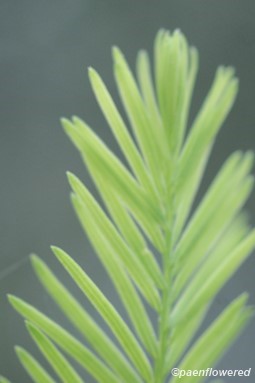
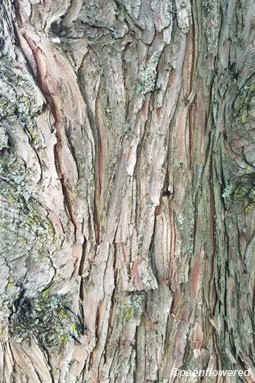
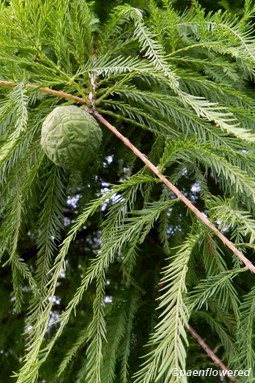

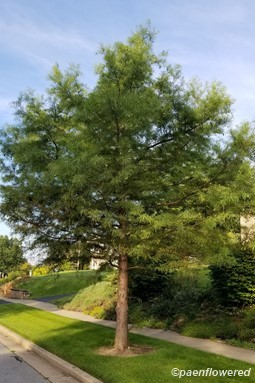
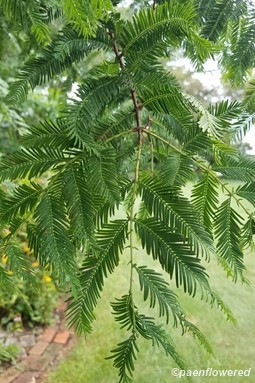


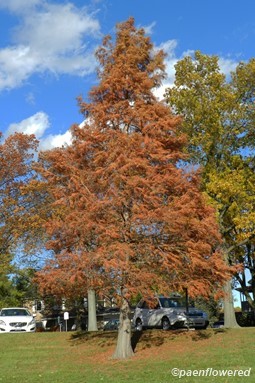
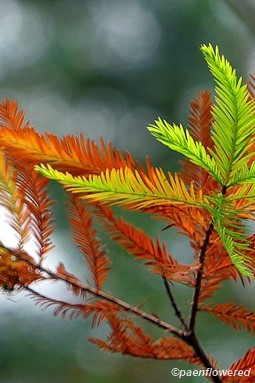
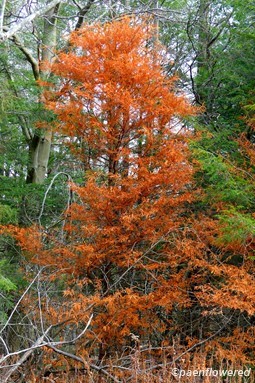
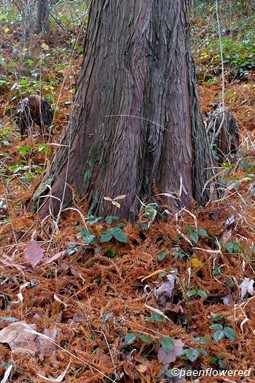
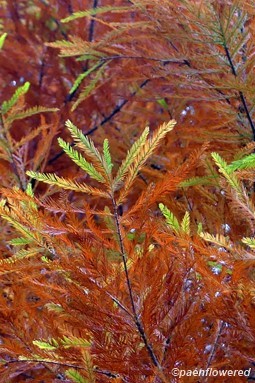

Comments
Have you spotted this plant in your area? We'd love to hear about your experience! Share your comments or questions about the plant below. Comments are moderated before posting.